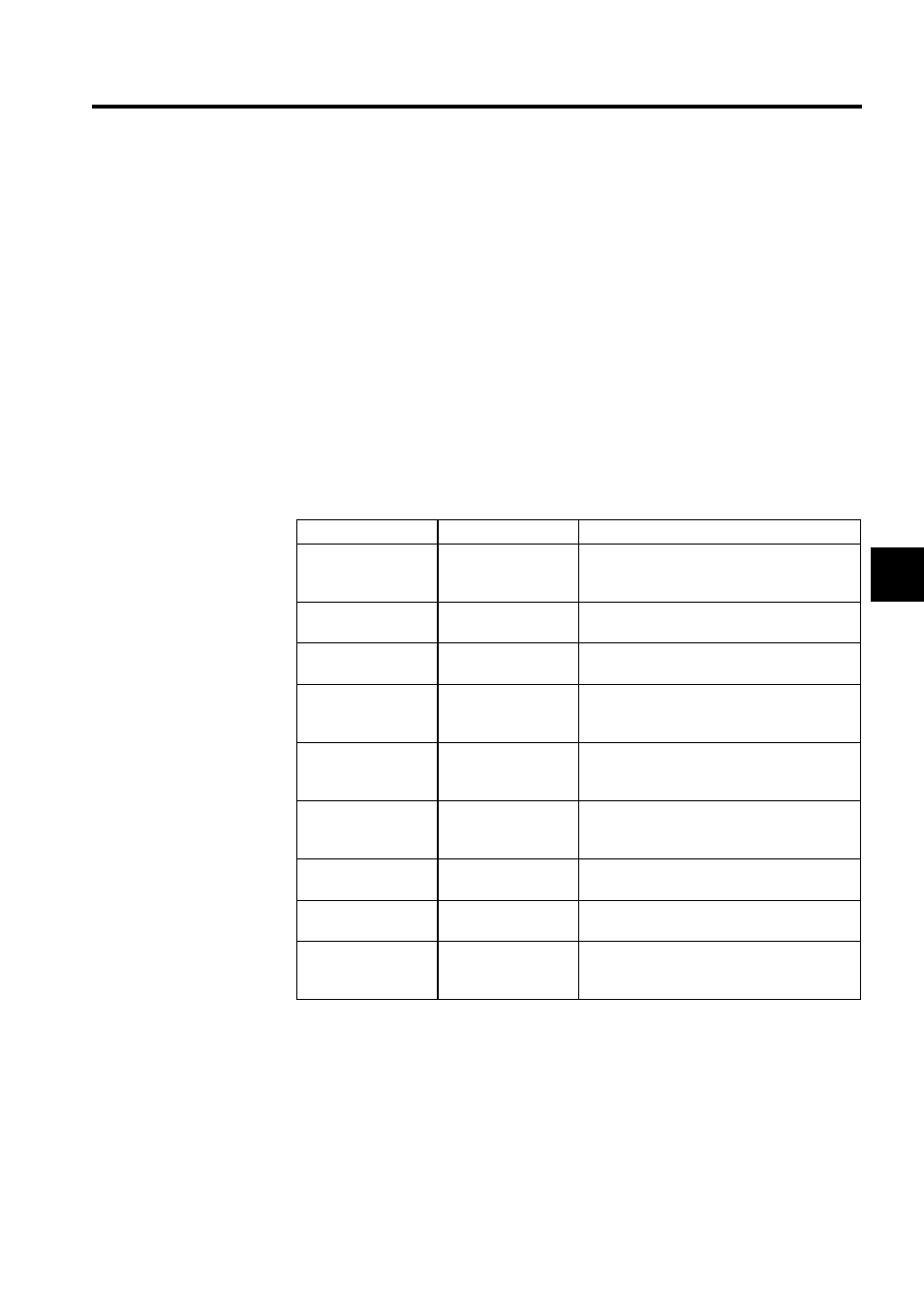Before reading this chapter, Parameter configurations – Yaskawa Large Capacity Sigma II Series User Manual
Page 79

4-3
4
Before Reading this Chapter
This chapter describes the use of each CN1 connector I/O signals in the SGDH SERVO-
PACK as well as the procedure for setting the related parameters for the intended purposes.
The following sections can be used as references for this chapter.
• List of CN1 I/O signals: See 2.4.3 I/O Signal Names and Functions.
• CN1 I/O signal terminal layout: See 2.4.2 List of CN1 Terminals.
• List of Parameters: See Appendix A List of Parameters.
• Parameter setting procedure: See 6.1.6 Operation in Parameter Setting Mode.
The CN1 connector is used to exchange signals with the host controller and external circuits.
Parameter Configurations
Parameters are comprised of the types shown in the following table. See Appendix A .
Type
Parameter No.
Description
Function Selection
Constants
Pn000 to Pn003
Select basic and application functions such as
the type of control or the stop mode used when
an alarm occurs.
Servo Gain and Oth-
er Constants
Pn100 to Pn123
Set numerical values such as speed and position
loop gains.
Position Control
Constants
Pn200 to Pn208
Set position control parameters such as the ref-
erence pulse input form and gear ratio.
Speed Control Con-
stants
Pn300 to Pn308
Set speed control parameters such as speed ref-
erence input gain and soft start acceleration/
deceleration time.
Torque Control Con-
stants
Pn400 to Pn409
Set torque control parameters such as the torque
reference input gain and forward/reverse torque
limits.
Sequence Constants Pn500 to Pn512
Set output conditions for all sequence signals
and changes I/O signal selections and alloca-
tions.
Others
Pn600 to Pn601
Specify the capacity for an external regenerative
resistor and reserved constants.
Auxiliary Function
Execution
Fn000 to Fn014
Execute auxiliary functions such as JOG Mode
operation.
Monitor Modes
Un000 to Un00D
Enable speed and torque reference monitoring,
as well as monitoring to check whether I/O sig-
nals are ON or OFF.
